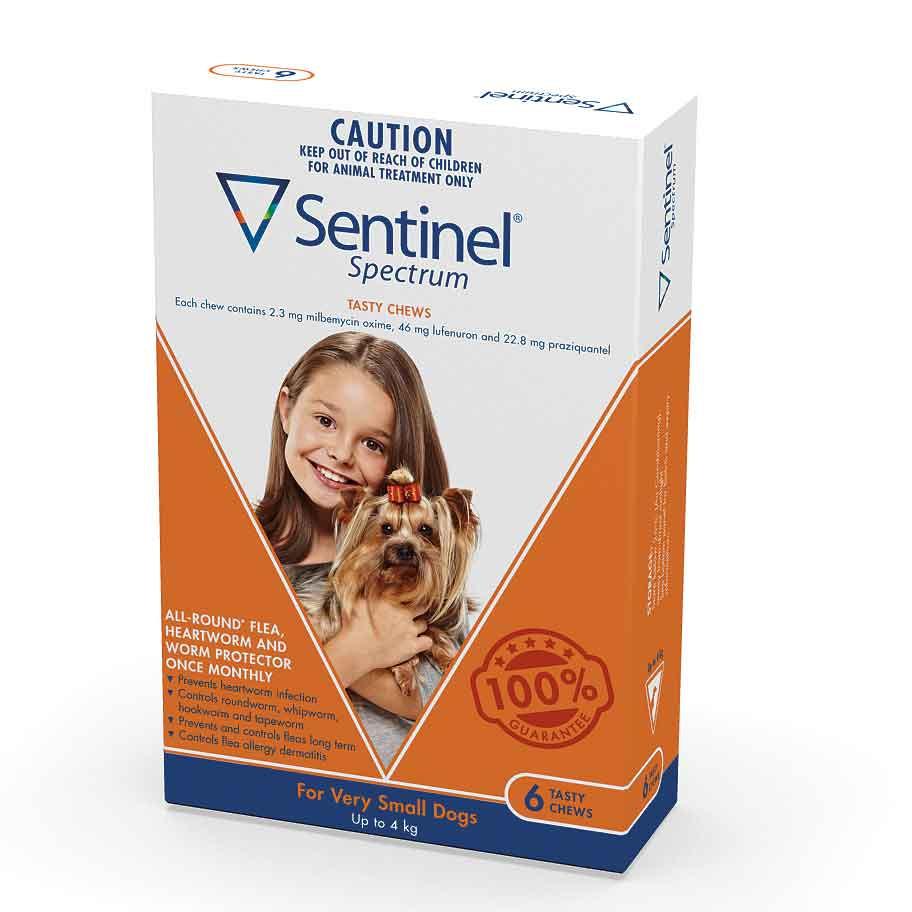

While it is more affordable than some other options, it’s still a significant annual expense. Sentinel Spectrum’s cost is another factor to consider. Always consult with your vet to ensure the appropriate dosage for your young pup. However, it’s important to note that puppies may need a different dosage than adult dogs, depending on their weight. Since puppies are often more susceptible to parasites, starting preventative care early is essential. Sentinel Spectrum is safe for puppies, but they should be at least six weeks old before starting this medication. Certain combinations may not be safe or may lead to an overdose of certain ingredients. However, before combining treatments, always consult with your vet. For instance, many users pair Sentinel Spectrum with a topical or collar-based tick treatment like Seresto. Given the lack of tick prevention in Sentinel Spectrum, some pet owners opt to combine it with other treatments. Combining Sentinel Spectrum with Other Treatments Dogs with existing allergies or health conditions may require a different preventative strategy.

It’s crucial to discuss your pet’s medical history with your vet before starting any new medication, including Sentinel Spectrum. If your pet exhibits any signs of an allergic reaction, contact your veterinarian immediately. Symptoms may include hives, itching, difficulty breathing, or swelling of the face, lips, or tongue. Though not common, hypersensitivity reactions have been reported. Some dogs may experience allergic reactions to medications, and Sentinel Spectrum is no exception. However, it’s essential to ensure that the entire dose has been consumed for the medication to be effective. In cases where dogs refuse to take the medication, owners have found success in various tricks like hiding the tablet in a treat or mixing it with their favorite food. While some dogs seem to enjoy the flavor and consume the chewable with no issues, others appear less enthusiastic. However, reviews show a spectrum of responses. The medication is designed as a beef-flavored chewable, aiming to make the administration process easier. Sentinel Spectrum: Taste and PalatabilityĪ common concern among pet owners revolves around the taste and palatability of Sentinel Spectrum. Alternatives like Simparica Trio or Nexgard might be preferred if tick prevention is a priority. However, its lack of protection against ticks and adult fleas can be a deciding factor for some pet owners. When comparing Sentinel Spectrum with other brands, it appears to hold its own, primarily due to its broad-spectrum coverage. However, some dog owners have reported their pets not liking the taste of the chews, while others have noted the absence of tick protection as a downside. The medication is often praised for its effectiveness, especially in preventing heartworms and controlling flea populations. Many dog owners appreciate the broad-spectrum protection and the convenience of a once-monthly chewable. Always consult with your vet if you observe any unusual behavior or symptoms in your pet after administering any medication.Ī variety of user reviews across different platforms paint a mostly positive picture of Sentinel Spectrum. It’s important to remember that every dog is unique, and reactions can vary. However, these side effects seem to be relatively rare and, in most cases, are mild and transient. These can include vomiting, diarrhea, lethargy, lack of appetite, or hypersensitivity reactions. Like all medications, Sentinel Spectrum may cause side effects.

This is often a point of confusion among dog owners, as some may expect Sentinel Spectrum to be a catch-all solution for all external parasites. However, it’s important to note that while Sentinel Spectrum is a powerful tool against fleas, it does not kill adult fleas or ticks. Furthermore, it prevents flea eggs from hatching, thus breaking the flea life cycle and helping control flea populations. It protects dogs from heartworms, hookworms, roundworms, whipworms, and tapeworms. Sentinel Spectrum is known for its broad coverage.


 0 kommentar(er)
0 kommentar(er)
